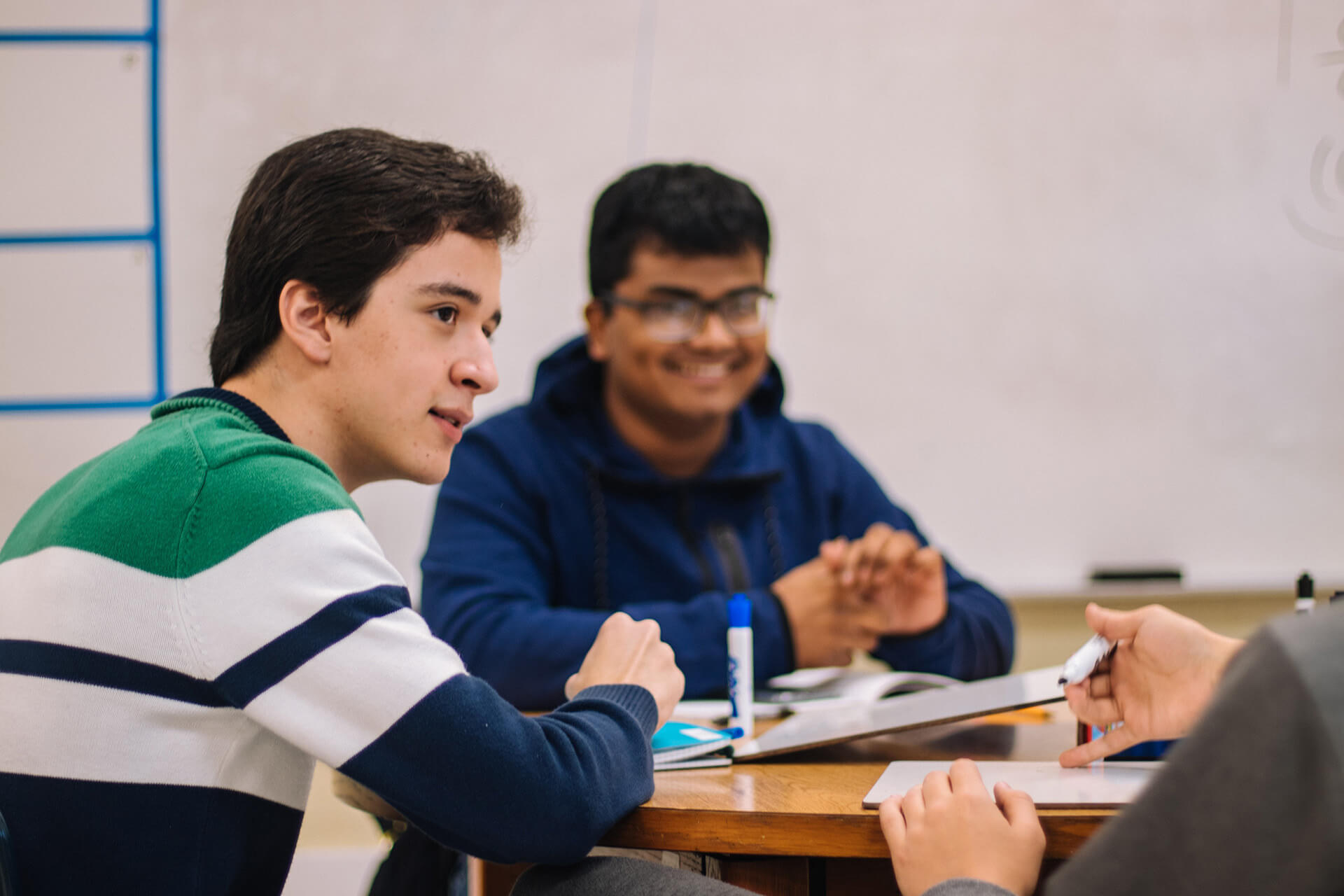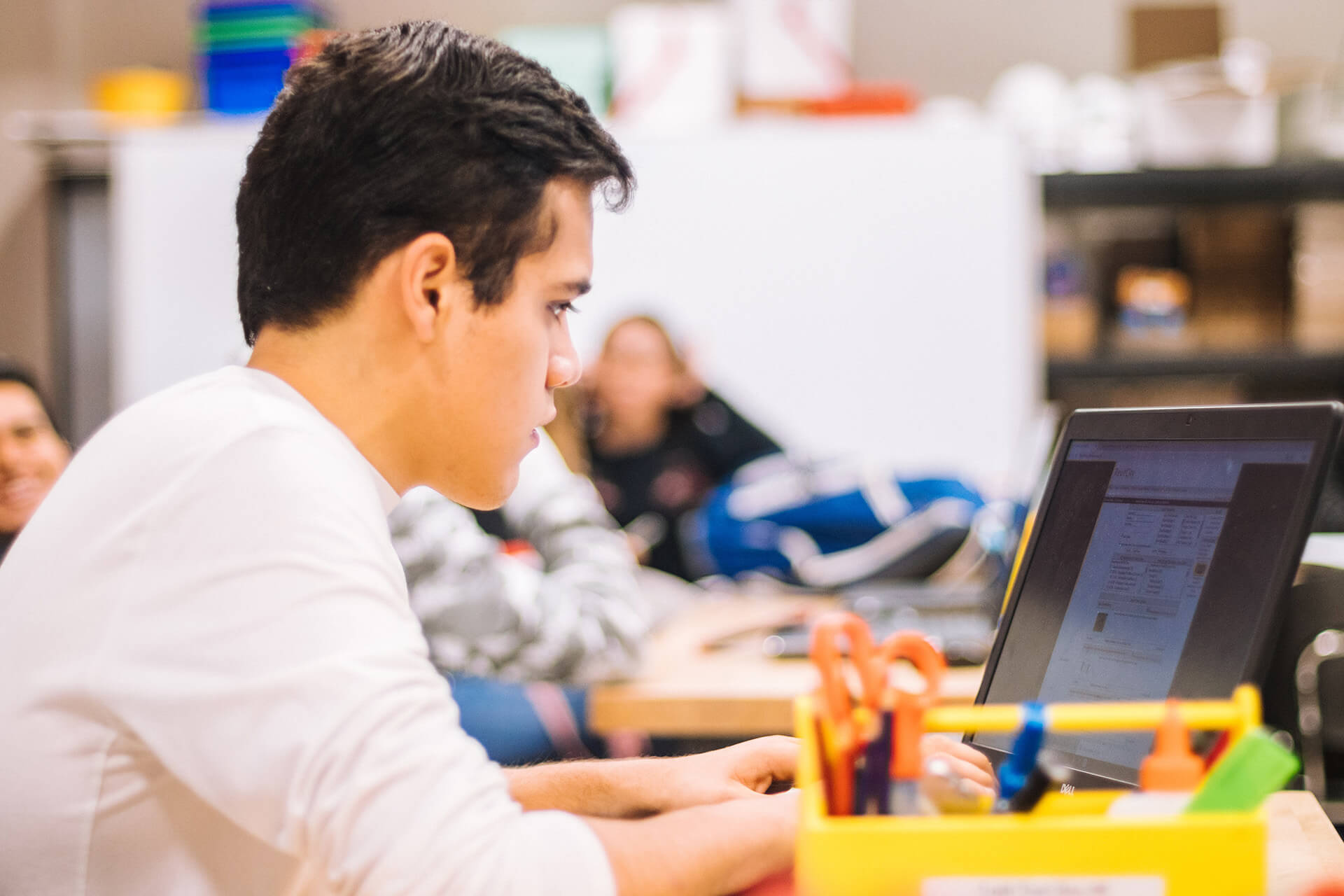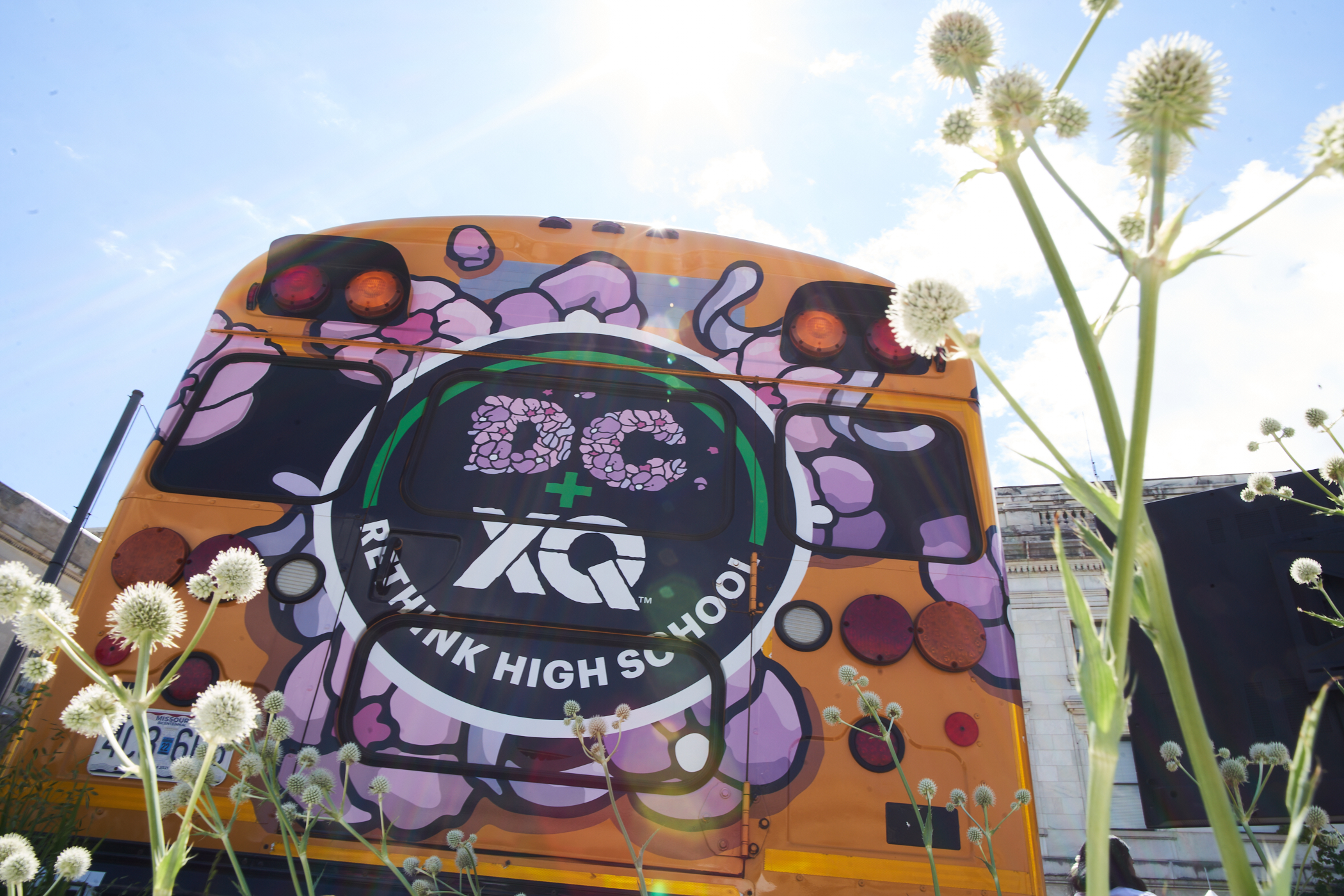Listen to Students to Navigate Change
As educators, students, families, and communities continue to reckon with the ramifications of the COVID-19 pandemic,…

As educators, students, families, and communities continue to reckon with the ramifications of the COVID-19 pandemic, much of the national conversation about its impact on high school students has centered on mitigating learning loss, particularly through the testing of knowledge and skills in order to provide remediation. Research tells us this narrow approach ignores what students, especially adolescents and those from historically marginalized communities, most deeply need: authentic, trusting relationships with their teachers and peers, as well as learning experiences imbued with meaning and purpose. To truly address the learning impacts of the pandemic, schools need to evolve to prioritize relationships and meaningful learning rather than testing and remediation.
But how do schools get there? How do schools figure out how best to support their students and communities and drive impactful continuous improvement? Change efforts are difficult and often fraught, even under normal circumstances.
We Have to Understand a Problem Before We Can Fix It
Every fruitful change effort starts with two key activities: listening and observing. What we hear from those impacted by our work, what we understand about how people feel in learning environments we create, and what we notice ourselves—these are the insights that set us on a path to improvement. Social Psychologist Robert Livingston, who has explored the process of change across a variety of settings, believes successful change efforts emerge when awareness combines with empathy as precursors to defining a strategy and taking action.
Schools achieve this when their continuous improvement efforts are grounded in data garnered from listening to students and teachers, and from observing teaching and learning. From this foundation, change efforts make sense to those who will enact them, and to those who will experience the changes.
Schools that really get this right have continuous improvement built into their DNA. They function as constantly evolving institutions and have systems and structures in place to listen, understand, communicate, and act, all while leaning into their core values.
In partnering with XQ, Springpoint has supported several XQ schools on their design journeys. In the last 18 months, as part of a suite of pandemic response supports, Springpoint coaches worked with school leaders to identify a problem of practice, understand the challenges at hand through virtual observations and conversations with stakeholders, and chart a course forward. The three schools highlighted below provide an illustration of the powerful impact of navigating the challenges of the pandemic by listening to students and prioritizing efforts that strengthened core practices in building meaningful, engaging learning experiences and caring, trusting relationships for and with students.

Feedback Cycles at PSI High
Students seek out PSI High because of its focus on design thinking and problem-based learning. It is a school where students are empowered as learners to pursue their interests and build the skills to be “globally aware citizens who lead and support changes to advance equity, democracy, and kindness in the world.”
Rather than abandon this innovative approach to learning during remote and hybrid learning schedules over the past year, educators at PSI High explored a critical research question: how do we continue to honor student voice and choice in what they are learning and provide opportunities for students to reflect and master a key set of skills? Class observations, conversations with students, and synthesis of this data revealed that while new students were hungry for rich projects that sparked curiosity and creativity, the constraints of the pandemic were limiting their ability to build their design thinking and collaboration skills, and engage in meaningful project-based learning.
In response, educators decided to kick off this school year with a project that would teach students PSI High’s design thinking approach, which requires students to self-assess their work, provide peer-to-peer feedback, and engage in teacher-to-student feedback. Students in grades 9-12 were divided into groups to build seven different “micro museums” focused on areas students expressed interest in: agriculture, conflict and war, diplomacy, city planning, entertainment, movement, sports. Students used tools like PSI High’s Student Passion Project PBL Design Kit and actively solicited and responded to feedback to create their final projects: micro museums for their topic and videos to share their work with their community. This micro museums project required students to learn about a topic that was interesting, prototype and engage in multiple rounds of feedback, and demonstrate their learnings authentically and in a unique way.
This approach ensured educators at PSI High built authentic relationships with students through a purposeful learning experience, while also preparing them to engage deeply in meaningful projects for the rest of the school year. Students are now primed to be agents of their own learning because educators at PSI High investigated students’ needs and designed experiences to address what they learned about students. This cycle of gathering data, figuring out what the data is saying about relationships and learning, and using these insights to ground learning experiences is a powerful process that any school community can leverage successfully.

Competencies and Relationships, Elizabethton High School
At Elizabethton High School in Tennessee, Principal Jon Minton decided that his goal was to move his students beyond “surviving”—a mode so many of us felt we were operating in this year. A few guideposts emerged as he listened to teachers and reflected on the experiences of students in the school. He heard teachers speak about wanting young people to focus more on skills than on content, and that they hoped to go beyond what standardized tests asked young people to do and focus on helping students build real critical thinking skills.
Digging a bit further and talking to students, it became apparent that what was missing was a shared lexicon around the skills being developed, and a clear means to assess them.
These observations led Minton to commit to ensuring that staff could help students focus on mastering 21st-century skills that they would recognize as applicable to their lives and meaningful for their goals. A plan emerged to prioritize cross-cutting, transferable skills that would be clearly present in all classes and across all learning experiences. Leadership created a task force to build on work done pre-pandemic and to identify the competencies they wanted to target. They revised the freshmen orientation to incorporate the established competencies and to help young people understand what they would be learning, and why. These shifts will be used to anchor the school’s transition from a traditional, comprehensive school to one that is geared toward preparing students to participate in a 21st-century workforce.
Another area at Elizabethton where observation led to intentional action was around relationship-building. Student panels revealed that many young people had connections with adults outside the classroom that they valued highly and that contributed to their overall success—a librarian who had created space to check in on students’ emotional well-being or wrestling coaches who regularly checked on student-athletes’ grades to make sure they were not falling behind. Students with these types of strong adult connections reported that they helped them handle a very stressful pandemic year and contributed to a positive learning experience at school.
And yet, careful observation also made clear that most of these relationships were typically due to students’ participation in extracurricular activities or formed with non-instructional staff or with a handful of teachers who made students feel seen and valued. The take-away for the school leadership was that while they tried to create an atmosphere where it was possible to build strong relationships between students and adults, they were not reaching all learners. To ensure all students have access to these critical student-adult connections, Elizabethton’s leadership team is working to intentionally put systems in place so that students can develop strong, meaningful relationships outside of their extracurriculars.
As a start, counseling staff are moving away from a reactive to a more proactive model by spending more time visiting classrooms and even moving the counseling office directly next to the cafeteria, allowing for more frequent and informal student “pop-ins.” The repositioning of the “Cyclone Student Center,” as the counseling office is now called, made counseling, support (academic and social/emotional), and post-secondary planning the centerpiece in this centralized location. This was a result of feedback from Springpoint observations, derived from the student panels where students shared that they needed easier access to information and clearer, more frequent communications to feel seen and heard. To further establish more foundational systems, staff are visiting and learning from Valor Collegiate Academy, a nearby school that is designed around a renowned human development model called Compass, which is built upon a concept of relational safety and the creation of a “relationship-based” community.
While they are still early in their design journey, Jon sees his role as ensuring the school community is one that believes change is possible, leans on internal best practices and external expertise, and moves forward with authenticity, vulnerability, and truth-telling.

Systematizing Student Supports at Grand Rapids Public Museum School
Prior to the pandemic, educators at Grand Rapids Public Museum School (GRPMS) began developing complementary systems to ensure every student had an adult to turn to for support, as well as space to regularly reflect on their progress towards their goals. These structures, advisory and squad, became especially important during remote learning, and the school doubled down on improving them in service of students.
Educators used feedback from the school community to clarify the distinction between advisory and squad to ensure all students received the academic and social-emotional support they needed. While they are complementary supports, there are key components of each that together, create an integrated approach to academic and social-emotional support. The school landed on a defined structure and purpose for each:
- In advisory, students meet with an adult several times a week and focus on social-emotional skill development and practice, college and career readiness, self-assessment and reflection, and preparation for portfolio demonstration of learning.
- In squad, mixed grade level students meet weekly to build community, participate in regular 1-1 academic conferencing with an adult, and have a social-emotional check-in with a small group of peers.
In both cases, there are concrete protocols and common curricula in place. And both structures provide students with a connection to a caring adult, a peer group with which they can explore themselves as a student and human, and a safe place to practice skills related to academics and social-emotional wellness.
The return to fully onsite learning this school year provided another reflection point for GRPMS educators to ensure they were meeting the specific needs of those students who were returning to school and still experiencing the impacts of the ongoing pandemic. Feedback from staff and students during the past year of hybrid learning is already shaping the evolution of advisory and squad. In advisory, this meant further codifying the capstone process for 11th-grade students so that advisors in each grade level could backwards map the skills and knowledge students would need to be successful. In squad, this meant committing to the key principles to meet students’ social-emotional needs at an, especially tender time, prioritizing student-led goal setting, and shifting more of the accountability for progress monitoring to students.
The impact of the two systems of student support could be felt and heard in conversations with students. One said, “in previous years, I didn’t think advisory was necessary. There’s a lot more to it this year. There’s a portfolio, and it’s more helpful. And with squads this year, I made a personal connection with the teacher. It’s more personal.” Students need that personal connection now more than ever.
GRPMS’ approach to student support through advisory and squad recognizes the humanity of each student and provides multiple opportunities to meet students’ academic and social-emotional needs. Their commitment to gathering data from stakeholders and adjusting their approach in response has a significant impact on students, even when unprecedented challenges make that data collection and iteration difficult. At Springpoint, we recognize this approach of making programmatic decisions with students at the center as a foundational practice for any school on a design journey.
Empowering Schools to be Effective Change Agents
These three XQ schools have innovative, bold visions for how to ensure their learners become masters of all fundamental literacies, holders of foundational knowledge, original thinkers for an uncertain world, generous collaborators, and learners for life. Achieving these visions is the work of learners and adults alike as they co-create learning communities that empower young people as the primary drivers of their own learning. Paramount to realizing this agency is a cyclical approach to school improvement where members of the school community are committed to their design journey, have systems in place to gather data, and evaluate change in a continuous feedback loop.
As we consider how we might harness the power of the work we’ve been doing with PSI High, Elizabethton High School, and Grand Rapids Public Museum School, Springpoint and XQ will partner to codify protocols and processes for discreet inquiry cycles that can support a culture of growth and evolution. Our goal is to enable all school communities, regardless of where they are on their design journeys, to listen to their students, observe learning, analyze data, and build cultures of iteration and improvement.









